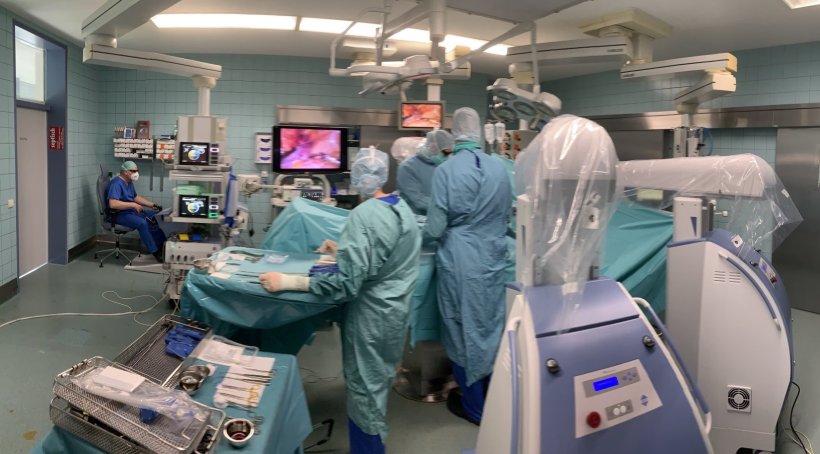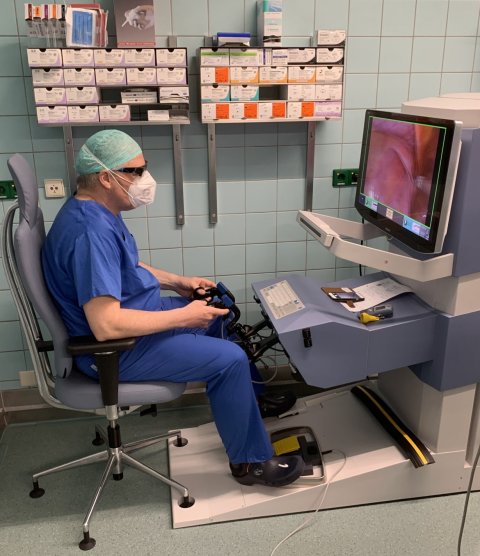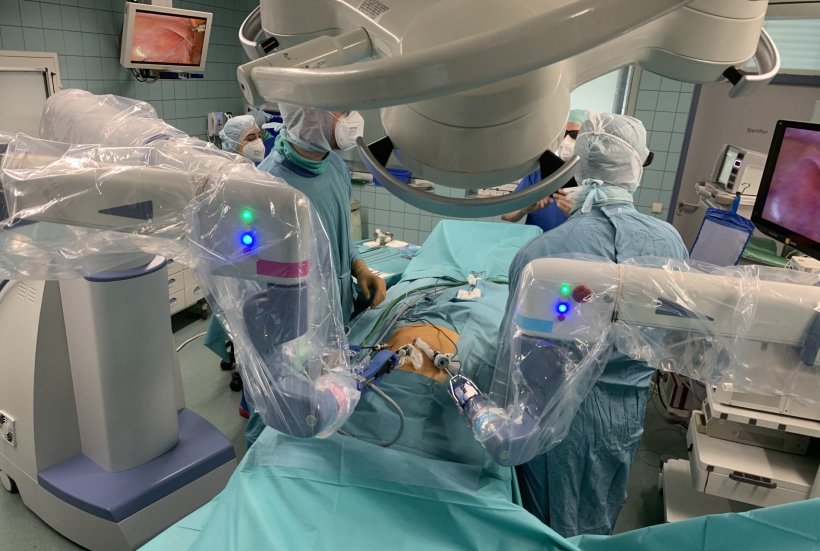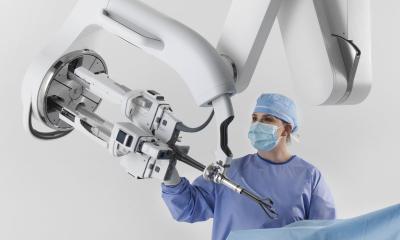
Image source: Prof Staib/Klinikum Esslingen
Sponsored • Senhance robotic system by Asensus
Surgical robots are the future of medicine
Esslingen is a town in the German state of Baden-Württemberg – an area that has been shaped by technological innovation since Carl Benz‘s first automobile hit the country roads. Even today, it is one of the most innovative regions worldwide. Thus, it does not come as a surprise that Esslingen‘s 660-bed hospital is interested in adopting cutting-edge technology. A surgical robot, to be precise. Enter Asensus, a corporate partner with an impressive product – the Senhance Robotic System.

Image source: Klinikum Esslingen
The thoracic surgeons at the hospital had gotten the ball rolling. In 2018, they decided that they wanted to perform certain lung surgeries with the help of a robot. The vascular surgeons quickly joined the team and soon, the gynaecologists and paediatricians were also on the pitch. 'The first step for the medical and care team of the surgery departments was intensive robotics training in Milan, Italy. The training was so excellent that we soon decided to partner with this young company,' recalls Professor Dr Ludger Staib, Medical Director of the Department for General and Vascular Surgery. In February 2020, things got serious.
First robotic surgery for paediatric ureteropelvic junction obstruction
Since then, 150 patients have undergone surgery involving the Senhance robots, mostly hernias, gall bladder and colon surgeries in adults. But in 2021, the paediatric surgeons have also successfully used the system: they performed the first Senhance robotic surgery for paediatric ureteropelvic junction obstruction. 'It was only the second operation that particular surgeon did with the Senhance system which shows that physicians who have a lot of experience with minimally invasive surgery very quickly feel confident using the Asensus robot,' says Professor Staib and adds that he is particularly impressed with the system’s tiny 3 mm instruments.

Image source: Prof Staib/Klinikum Esslingen
Another feature, he points out, is the built-in tremor filter that eliminates the minute trembling of human hands. This enables ultra-precise work that human hands can hardly achieve. Moreover, he explains, haptic feedback ensures that the surgeon avoids areas that should not be touched: 'The robot tells me if there is any resistance or if the stress on the tissue is too much. That is very helpful and makes the operation even safer and less taxing for the patient.' It is also less taxing for the surgeons. During the procedure they sit at an open console in front of a height-adjustable workstation and can monitor the entire OR, which is 'an important safety feature,' as Professor Staib underlines.
The system provides high resolution images in up to 6x magnification. The camera is controlled by the surgeon’s eye movements, the instruments inside the patient body are controlled by the surgeon’s hands. 'We are very happy that the system is an open platform which allows us to connect our own camera,' says Professor Staib and explains that 'Asensus has developed several adapters while other manufacturers force customers to buy their optical system.'
A further – financial – advantage is the use of standard instruments and trocars. Other systems require specific components that have to be replaced after a few operations, but the Senhance system works with trocars used in hospitals. The robotic instruments can be sterilised and reused – 'a sustainable and cost-saving approach,' Professor Staib emphasises.

Image source: Prof Staib/Klinikum Esslingen
New in 2022
Hospitals have to join the trend if they want to stay competitive
Ludger Staib
Professor Staib is looking forward to a new feature that Asensus will be launching in 2022: articulated 5 mm instruments were developed to facilitate complicated surgeries. Particularly the thoracic surgeons are looking forward to these new instruments as they are the Senhance robot trail blazers. 'There is no lung surgeon worldwide who could help our team with these specific thoracic surgeries,' Professor Staib says and adds that 'in the lungs region, large blood vessels have to be dealt with hyper-carefully which is a challenge for every thoracic surgeon. Small articulated instruments might offer real help.'
Patient feedback to the new technology in Esslingen has been overwhelmingly positive. Indeed, many patients specifically choose the hospital to receive robot-assisted surgery. 'Robots are the systems of the future,' Professor Staib says and adds that 'hospitals have to join the trend if they want to stay competitive.' (SB)
21.01.2022










